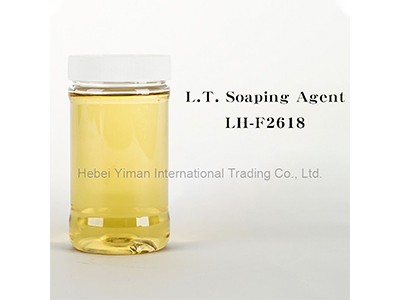When dyeing at high temperature and high pressure. Disperse dyeing process of polyester fiber.
Divided into four stages
1. Disperse dyes migrate from the dye solution to the fiber surface due to the difference in concentration:
2. Disperse dyes are adsorbed to the fiber surface:
3. Disperse dye penetrates into the fiber:
4. Disperse dyes migrate inside the fiber.
So as to achieve a good leveling effect and in the process of these four stages.
The form of disperse dyes on dye liquor and fiber
It has undergone several changes:
First, disperse dyes are dispersed in an aqueous solution in the form of particles (multiple single crystal dye molecules) through a dispersant. Form a dispersed system. Secondly, as the temperature increases, the thermal movement of the dye molecules intensifies and gradually differentiates into a single crystal state. Finally, the disperse dye in the single crystal state penetrates into the fiber, transfers within the fiber and reaches equilibrium. The dye molecules in the dye liquor continuously enter the fiber, and a certain proportion of the disperse dye in the fiber is transferred from the fiber to the dye liquor.

Dyeing is balanced at all stages of the dyeing process of disperse dyes. There will always be single-crystal disperse dyes when they get enough energy to get rid of the restraint of the dispersant and combine with other single-crystal disperse dyes to form larger crystals (or recrystallization), once the recrystallized crystals are large enough. Dye spots or stains will be formed, which can improve the degree of plasticization of the fiber, which will help the dyeing process to be completed as soon as possible. In addition, the solubility of disperse dyes in water is very low, and the dyes in the dyeing liquor need to be dispersed in the dyeing bath as a suspension through a large amount of dispersant when dyeing polyester fibers. In order to achieve a better dyeing effect, a certain amount of dyeing auxiliary is usually added.
The role of dyeing auxiliaries in the dyeing process
a. Properly increase the solubility of disperse dyes:
b. Promote the adsorption of disperse dyes on the fiber surface:
c. Plasticize the fiber or increase the degree of swelling. Speed up the diffusion speed of disperse dye in fiber:
d. Improve the dispersion stability of the dye.
Generally, the auxiliaries used in high-temperature and high-pressure dyeing of polyester fibers contain a carrier that plasticizes the fiber, a surface active agent that solubilizes disperse dyes or stabilizes the dye suspension, and other dyeing auxiliaries have a very important effect on the dyeing of polyester fibers.
We are the printing paste supplier, if you are interested in our products, please feel free to contact us.
Post time: Sep-22-2020

